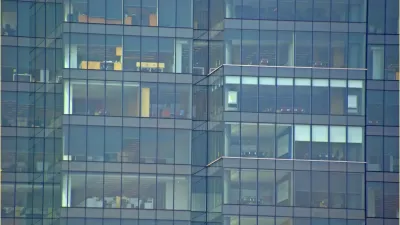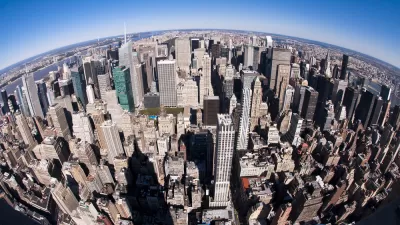Forbes may think differently, but Washington D.C.'s residents know very well that their city isn't cool, writes Rebecca Greenfield. She discusses the structural reasons why D.C. is not, and never will be, hip.
"No matter how hard it tries by rejuvenating neighborhoods like H Street,
the strip that landed it the No. 6 spot on that Hippest Hipster
Neighborhoods ranking, there are some structural barriers to D.C. which
preclude hipness," argues Greenfield. These include: cost of living, size limitations, transience of residents, and "[n]o promise of glamorous success" (unless you're Monica Lewinsky or Anthony Weiner).
In a piece for Bloomberg View, Josh Barro takes issue of several of Greenfield's reasons, but agrees with her larger point and one specific overriding factor - D.C. isn't hip because it attracts professional squares. Says Barro, "[t]he real problem is buried deep in Greenfield's piece, and sadly it's
not one that policy change can fix: Washington is boring because it's
full of people who work for and around the government. These people may
be insufferable (Capitol Hill staffers, lobbyists) or dull (bureaucrats,
lawyers), but they are highly unlikely to be hip."
"The city attracts government nerds and sticks them in social situations
where there is no pressure to suppress the boring. This isn't a problem
that can be fixed with better planning policy. The only solution is
escape."
FULL STORY: The Structural Barriers to D.C.'s Hipness: An Anti-Rant

Planetizen Federal Action Tracker
A weekly monitor of how Trump’s orders and actions are impacting planners and planning in America.

Map: Where Senate Republicans Want to Sell Your Public Lands
For public land advocates, the Senate Republicans’ proposal to sell millions of acres of public land in the West is “the biggest fight of their careers.”

Restaurant Patios Were a Pandemic Win — Why Were They so Hard to Keep?
Social distancing requirements and changes in travel patterns prompted cities to pilot new uses for street and sidewalk space. Then it got complicated.

Platform Pilsner: Vancouver Transit Agency Releases... a Beer?
TransLink will receive a portion of every sale of the four-pack.

Toronto Weighs Cheaper Transit, Parking Hikes for Major Events
Special event rates would take effect during large festivals, sports games and concerts to ‘discourage driving, manage congestion and free up space for transit.”

Berlin to Consider Car-Free Zone Larger Than Manhattan
The area bound by the 22-mile Ringbahn would still allow 12 uses of a private automobile per year per person, and several other exemptions.
Urban Design for Planners 1: Software Tools
This six-course series explores essential urban design concepts using open source software and equips planners with the tools they need to participate fully in the urban design process.
Planning for Universal Design
Learn the tools for implementing Universal Design in planning regulations.
Heyer Gruel & Associates PA
JM Goldson LLC
Custer County Colorado
City of Camden Redevelopment Agency
City of Astoria
Transportation Research & Education Center (TREC) at Portland State University
Camden Redevelopment Agency
City of Claremont
Municipality of Princeton (NJ)





























